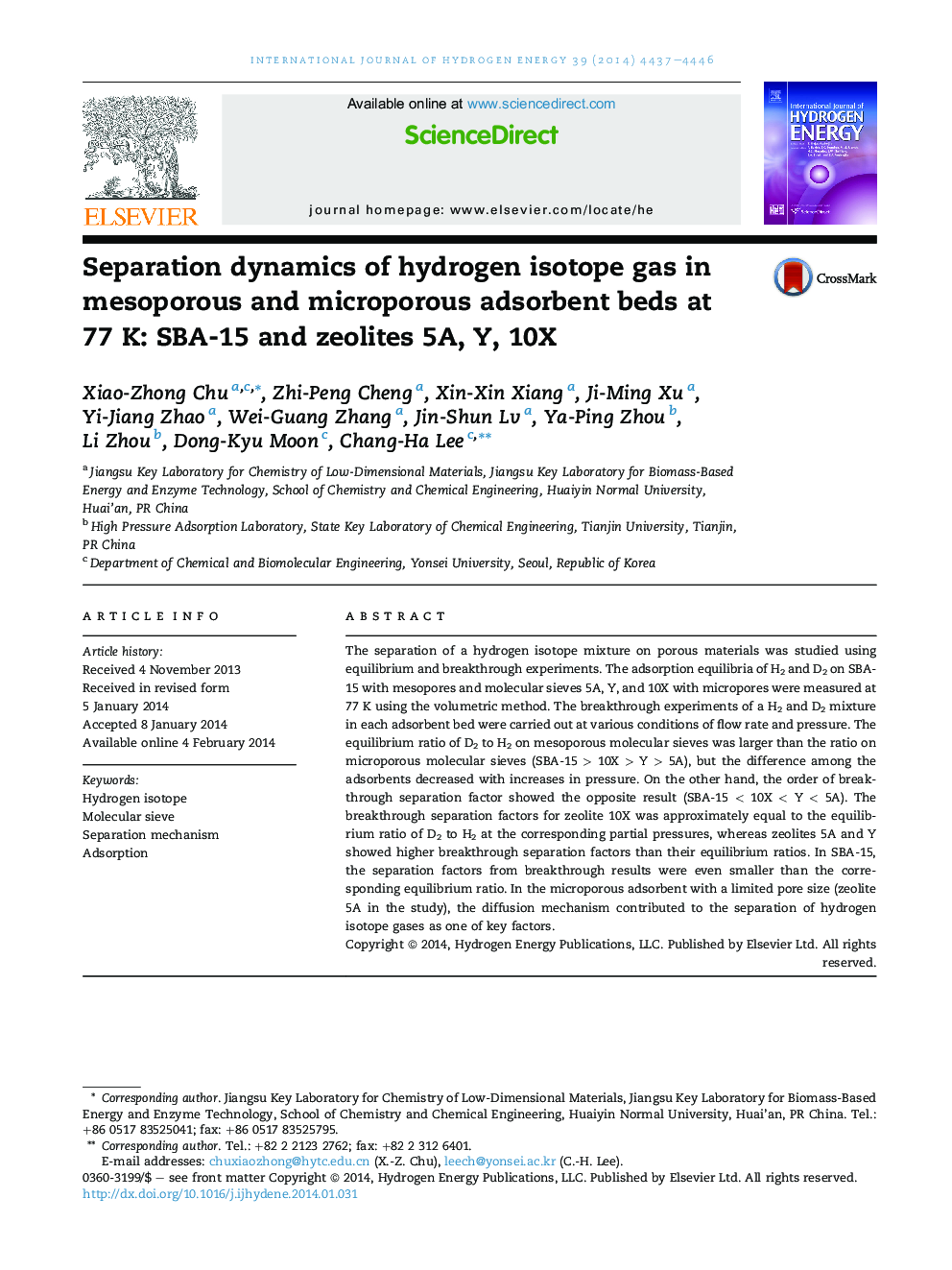| Article ID | Journal | Published Year | Pages | File Type |
|---|---|---|---|---|
| 1270534 | International Journal of Hydrogen Energy | 2014 | 10 Pages |
•Separation of hydrogen isotope at 77 K was studied on SBA-15 and zeolites 5A, Y, 10X.•Separation factor (SBA-15 < 10X < Y < 5A) and equilibrium ratio were in reverse order.•Dynamic effect contributed to the separation of hydrogen isotope in zeolite 5A.•The adsorption equilibrium difference dominated the separation in zeolite 10X.•Dynamic effect of hydrogen isotope separation decreased with increasing pore size.
The separation of a hydrogen isotope mixture on porous materials was studied using equilibrium and breakthrough experiments. The adsorption equilibria of H2 and D2 on SBA-15 with mesopores and molecular sieves 5A, Y, and 10X with micropores were measured at 77 K using the volumetric method. The breakthrough experiments of a H2 and D2 mixture in each adsorbent bed were carried out at various conditions of flow rate and pressure. The equilibrium ratio of D2 to H2 on mesoporous molecular sieves was larger than the ratio on microporous molecular sieves (SBA-15 > 10X > Y > 5A), but the difference among the adsorbents decreased with increases in pressure. On the other hand, the order of breakthrough separation factor showed the opposite result (SBA-15 < 10X < Y < 5A). The breakthrough separation factors for zeolite 10X was approximately equal to the equilibrium ratio of D2 to H2 at the corresponding partial pressures, whereas zeolites 5A and Y showed higher breakthrough separation factors than their equilibrium ratios. In SBA-15, the separation factors from breakthrough results were even smaller than the corresponding equilibrium ratio. In the microporous adsorbent with a limited pore size (zeolite 5A in the study), the diffusion mechanism contributed to the separation of hydrogen isotope gases as one of key factors.
